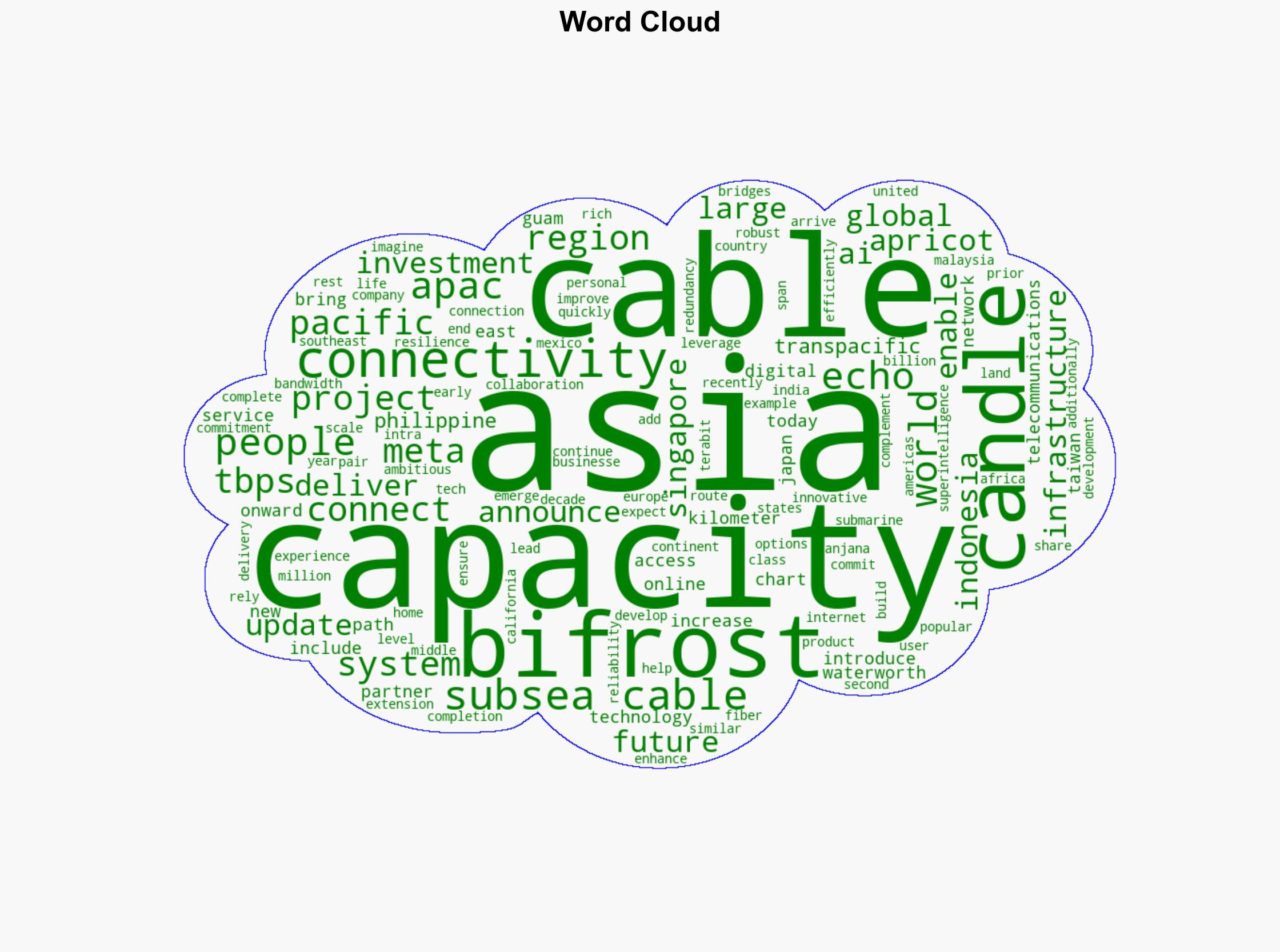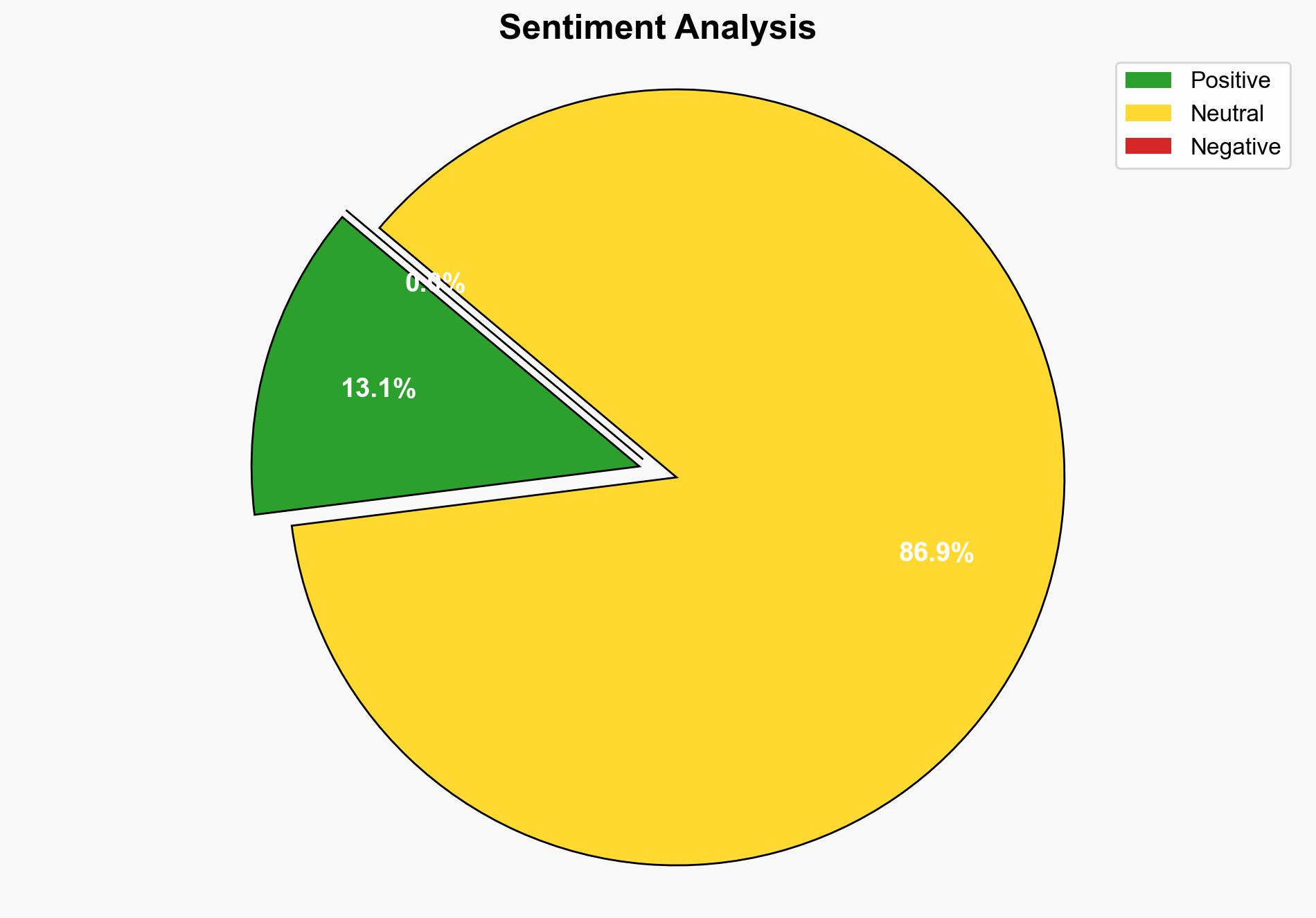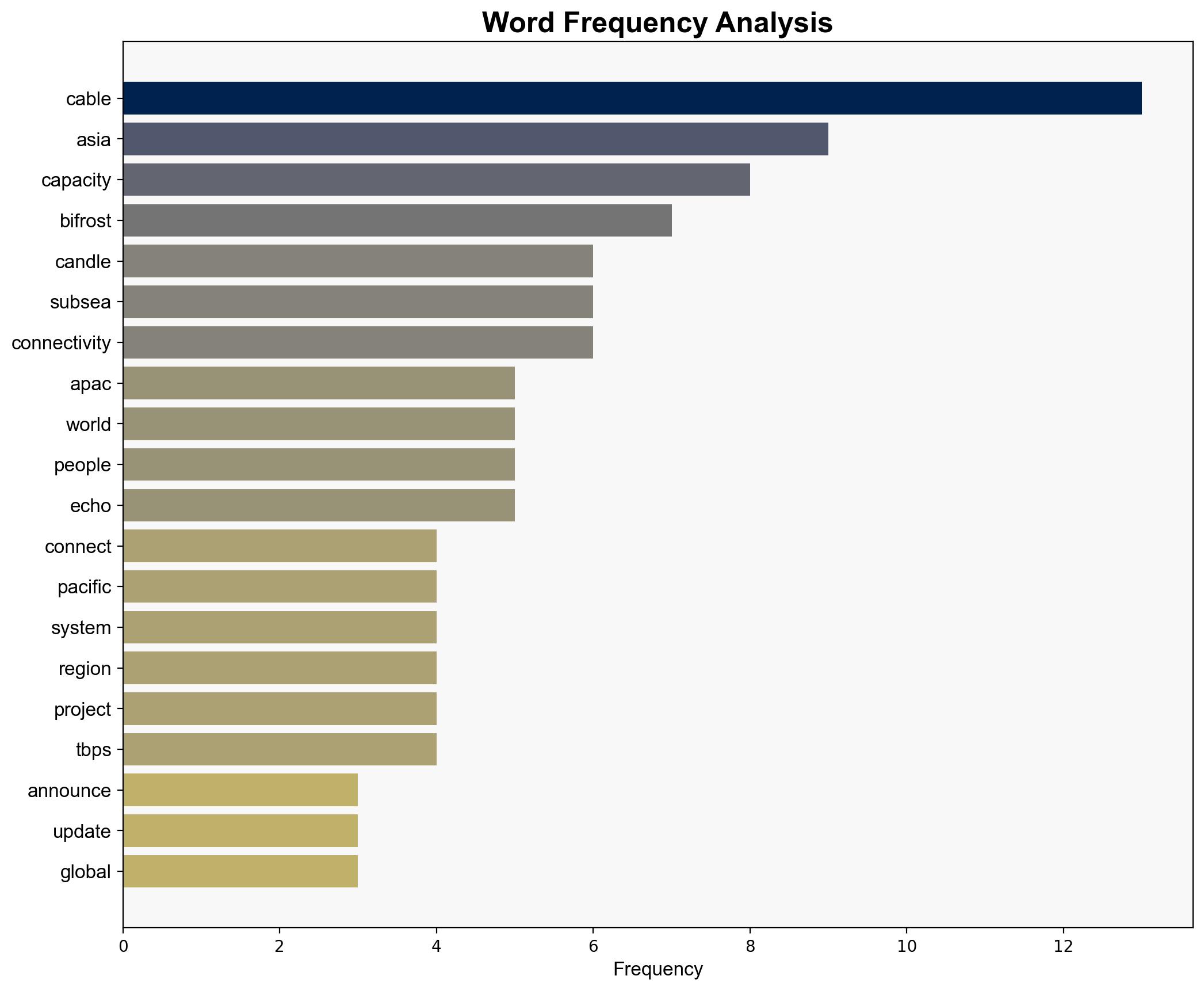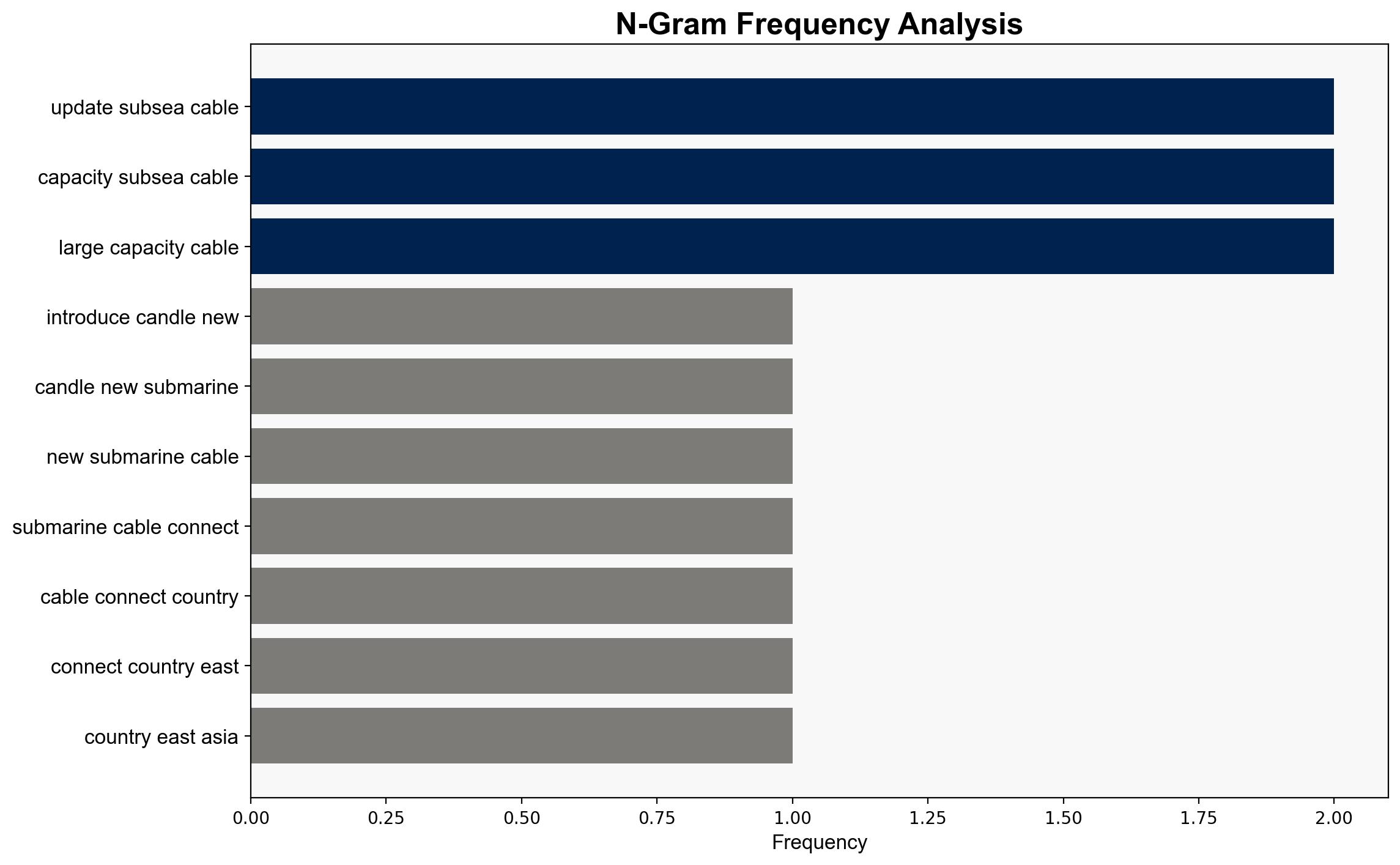Introducing the Candle Subsea Cable Updates to Our Asia-Pacific Connectivity Projects – Fb.com
Published on: 2025-10-06
Intelligence Report: Introducing the Candle Subsea Cable Updates to Our Asia-Pacific Connectivity Projects – Fb.com
1. BLUF (Bottom Line Up Front)
The most supported hypothesis is that Meta’s investment in the Candle subsea cable system is primarily aimed at enhancing its service delivery and market penetration in the Asia-Pacific region, leveraging increased connectivity to support its AI and digital services. Confidence Level: High. Recommended action is to monitor the implementation of these infrastructure projects for potential geopolitical and cybersecurity implications.
2. Competing Hypotheses
1. **Hypothesis A**: Meta’s subsea cable investments are driven by a strategic goal to enhance connectivity and service delivery in the Asia-Pacific region, thereby increasing market penetration and supporting its AI initiatives.
2. **Hypothesis B**: The investment in subsea cables is primarily a geopolitical maneuver to establish technological influence and counter potential regional competitors, under the guise of improving connectivity.
Using the Analysis of Competing Hypotheses (ACH) 2.0, Hypothesis A is better supported due to Meta’s historical focus on expanding digital infrastructure to support its services and the explicit mention of AI and connectivity improvements in the source text.
3. Key Assumptions and Red Flags
– **Assumptions**: It is assumed that Meta’s primary motivation is commercial and service-oriented rather than geopolitical. It is also assumed that the technological advancements in the cable systems will be effectively implemented without significant delays.
– **Red Flags**: The potential for geopolitical tension arising from increased infrastructure presence in sensitive regions is not addressed. There is also a lack of detailed information on cybersecurity measures for these cables.
4. Implications and Strategic Risks
– **Economic**: Enhanced connectivity could lead to increased economic activity and digital service consumption in the Asia-Pacific region.
– **Cyber**: The introduction of new infrastructure could present new cybersecurity vulnerabilities, potentially exposing Meta and regional partners to cyber threats.
– **Geopolitical**: The expansion of digital infrastructure could be perceived as an attempt to exert influence, potentially leading to regional tensions or pushback from local governments.
– **Psychological**: Improved connectivity and service delivery could enhance user engagement with Meta’s platforms, reinforcing its digital ecosystem dominance.
5. Recommendations and Outlook
- Monitor regional responses to Meta’s infrastructure projects to assess geopolitical impacts.
- Ensure robust cybersecurity measures are in place to protect the new infrastructure.
- Scenario Projections:
- Best Case: Seamless implementation leading to enhanced connectivity and market growth.
- Worst Case: Geopolitical tensions and cybersecurity breaches disrupting operations.
- Most Likely: Successful deployment with minor regional pushback and manageable cybersecurity challenges.
6. Key Individuals and Entities
– Meta (formerly Facebook)
– Telecommunications companies involved in the Candle project
– Regional governments in Japan, Taiwan, Philippines, Indonesia, Malaysia, and Singapore
7. Thematic Tags
national security threats, cybersecurity, regional focus, digital infrastructure, geopolitical strategy




